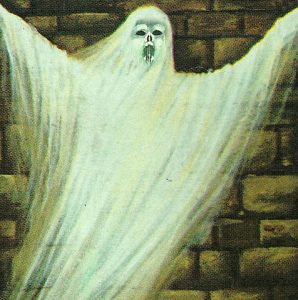It was once known as the key to controlling Scotland. With it’s bloody history, and the number of times it was attacked and changed hands, Stirling Castle was well named.

As I walked through the castle gates I had this strange sensation. It was almost as if I could ‘feel’ the history surrounding the place. Without a doubt this is one of the grandest castles in Scotland, and although it’s difficult to imagine the bloody events that took place here, you do tend to get that sort of uncanny, weird ‘feeling’.
The Historic Stirling Castle
It stands on an old volcanic outcrop guarding the main route north into the Scottish Highlands. Although there is no confirmation as to exactly when it was first built, references to it appear in historical records as far back as the early 12th Century.
During a long, bloody history it has been attacked or besieged at least 16 times.
Its most famous (or infamous) period was during the late 13th and early 14th centuries, when it played a prominent part in the bitter conflict between England and Scotland.
THE FIGHT FOR STIRLING CASTLE….
It was seized by Edward I of England in 1296, but in the following year, 1297 the Scottish forces of William Wallace gathered at Stirling Bridge and overthrew the English in what is probably the most famous defeat ever suffered by an English army.
With its prime position, having control of the Castle was perceived to be particularly important, because the belief was that whoever controlled it controlled Scotland.
The bloody history continued with the great seige of 1304 and the castle surrendered to the English after four months of bombardment. But the most famous battle was the Battle of Bannockburn, on the 24th June 1314, two miles south of Stirling. Following the Bannockburn victory by Robert the Bruce the Scots resumed control once again.
However, after defeat at Halidon Hill, Stirling was once again under English control and English soldiers patrolled its walls. In 1337 the strengthened castle was besieged by a Scottish army led by Sir Andrew Moray, but was later recaptured by King Edward III.
The last failed military exercise here was an attack by Bonnie Prince Charlie in 1745.
THE CASTLE GHOST….
 Mary Queen of Scots was crowned in Stirling Castle in 1543 and her son, James VI was christened in the nearby parish church.
Mary Queen of Scots was crowned in Stirling Castle in 1543 and her son, James VI was christened in the nearby parish church.
After her return from France in 1561, as she slept in her bed at Stirling one night, she was almost overcome by smoke when a candle set fire to the curtains in her bedroom.
She was awakened by a maid, and the episoce was the prelude to yet another ghost story. Almost all of Scotland’s castles have stories of ghosts, and perhaps the best known ghost of Stirling Castle is that of the Green Lady, a phantom said to appear at the most unexpected times and places in the castle.
The City of Stirling itself is one of the most important landmarks in Scotland’s history and it has borne witness to many important events of the past, which significantly shaped the country’s future. Today Stirling is trouble free and a delightful place to visit.
Stirling Castle is one of the most popular visitor attractions in the country, due to it’s rich history. Close to Stirling is the Wallace Monument, a magnificent memorial to one of Scotland’s heroes. Other attractions include the Bannockburn Heritage Centre, and the Old Town Jail. To get the most out of your visit to Stirling, you must visit the Castle.
Your visit will transport you back in time as you take in the Castle Exhibition, the Royal Palace, the Chapel Royal, the Palace Vaults, the Gardens, and the Regimental Museum.
After that you can relax in the cafe and have a browse in the gift shops.
Check Opening Times & Admission Prices
Find A Hotel In Scotland. Different providers, different prices, and user reviews. Save time and money, search them here for the best deal.
MORE SCOTTISH CASTLES….